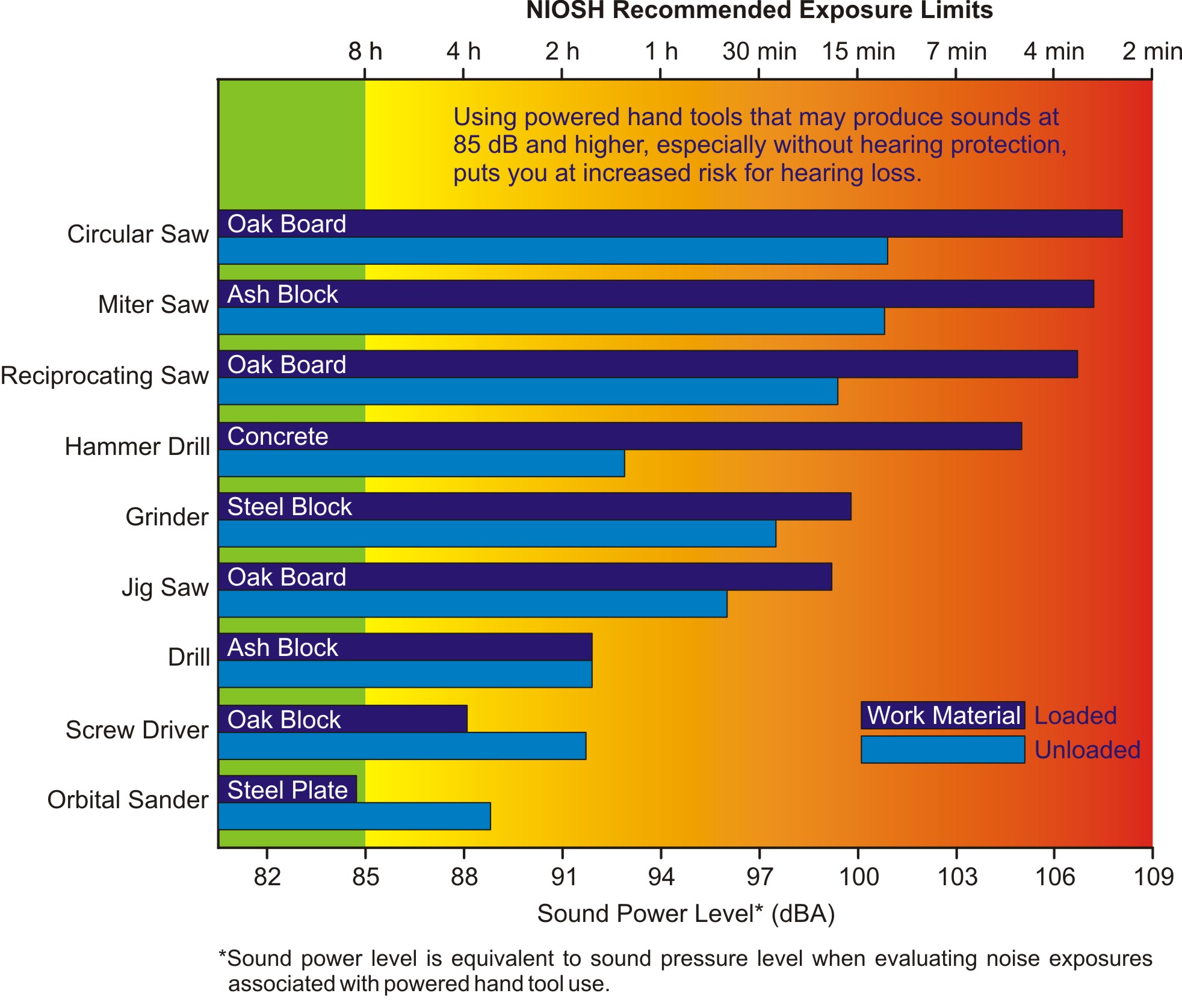Cdr. Charles Hayden, M.S. - csh0@cdc.gov
Ed Zechmann, M.S.
NIOSH,
Popular
Version of Paper 5pNSb1
Presented Saturday, December 2,
2006
4th Joint ASA/ASJ Meeting,
Existing standards for acquiring the sound power levels
of powered hand tools generally specify that sound levels be measured in the
unloaded condition, tool at full throttle and not in contact with material.
New research results from the National
Institute for Occupational Safety and Health (NIOSH) show that most powered hand
tools, when put to their intended usefor example, when a circular saw cuts into
woodare noisier than when unloaded.
The
study found that noise levels from tools in the loaded
conditionin
contact with material, such as wood or metalwere
4.1 dBA higher, on average, than noise levels from the same tools that were not
in contact with material. These tests represent the first time that researchers
have compared noise (specifically sound power levels) from tools in the loaded
versus unloaded condition.
Illustrated below are comparisons of the mean sound power levels for each type of powered hand tools tested in the loaded and unloaded conditions.

Demonstrated below are audio files of the differing sound power levels for a circular saw in the unloaded and loaded condition.
The
results will help NIOSH in ongoing research to assess issues of work-related
noise. For example, they will help NIOSH assess whether current industry and
government noise standards for powered hand tools, which are based on noise
levels from tools not in contact with material, are effective and appropriate
for determining if those tools pose a risk to
hearing.
The
data do not form a basis for NIOSH policy on powered hand tool noise. As a
longstanding recommendation, NIOSH recommends that work-related exposures to
noise from any source should be reduced to 85 dBA for an 8 hour period to
protect hearing.
The study results will be presented by Charles Hayden, a NIOSH mechanical engineer, at the annual meeting of the Acoustical Society of America in December. Powered hand tools used in the tests included circular saws, miter saws, reciprocating saws, hammer drills, grinders, jigsaws, drills, screw drivers, and orbital sanders.
The
noise levels of the tools tested can
be found on the NIOSH
Searchable Database for Hand Tools. The database is one of NIOSHs resources
for helping employers and workers to identify potential job-related risks for
hearing loss, and to take effective steps to reduce exposures.